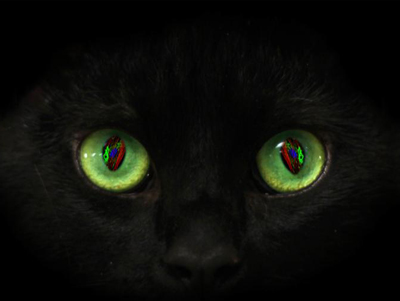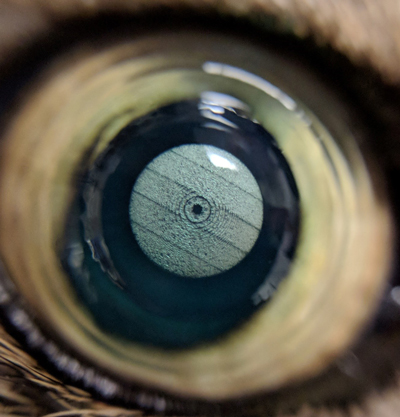Former Projects
Corneal Wound Healing and Nerve Regeneration
Collaborators: Scott MacRae (Ophthalmology), Kye-Im Jeon (Ophthalmology), Keith Nehrke (Nephrology)

Corneal scarring is a major cause of vision loss and blindness worldwide – particularly in economically-developing countries. Causes include almost any disruption to normal corneal structure and function, whether from infection, trauma (chemical or physical), laser refractive surgery, corneal transplantation or disease. There are few effective means of controlling corneal scaring despite decades of research. Our ultimate goal is to understand mechanisms of corneal wound healing and to design effective therapies to treat or prevent corneal scarring.
More recently, our lab started to study corneal innervation in the context of damage. The cornea is the most densely innervated tissue in the body and disturbances of innervation, which invariably occur following all disruptions listed above, lead to pain, dry eye, poor healing and further corneal dysfunction, which dramatically impair vision and quality of life – often permanently.
In spite of the key importance of corneal innervation for health, function and well-being, the interplay between wound fibroblasts and regenerating nerves is poorly understood. Our work is designed to address this gap. Only by better understanding the interactions between corneal nerves and the wound microenvironment can we ultimately design treatments for fibrosis and scarring that preserve and/or restore all aspects of corneal structure and function.
Current projects in the lab include:
- Assessing the effects of corneal injury on non-myelinating Schwann cells and corneal nerves, as well as the interactions between them, and with the rest of the corneal micro-environment
- Examining the synergistic effects of SEMA3A and TGF-b1 on corneal myofibroblasts differentiation and nerve regeneration
- Assessing how scars shape the neural landscape in the cornea, and identifying the key molecular mediators of TGF--b1’s anti-neuritogenic effect on peripheral neurons
- Understanding the molecular substrates of myofibroblast inhibition of nerve regeneration after corneal injury by:
- Using siRNA and CRISPR to manipulate levels of key molecules in either neurons or fibroblasts in vitro (single cell and co-culture assays)
- Using small molecules or off-label drug formulations to manipulate levels of key molecules in vivo, in our unique animal model of corneal wound healing
A new phase of this research is focusing on the following specific aims:
- Identify metabolic changes through which inhibiting mitochondrial pyruvate transport promotes neurite outgrowth of peripheral sensory neurons in a simulated wound environment
- Identify metabolic changes through which inhibiting mitochondrial pyruvate transport promotes de-differentiation of corneal myofibroblasts
- Contrast the relative efficacy of different mitochondrial modulators for overcoming the inhibitory impact of fibrosis on corneal nerve regeneration in vivo
LIRIC – a new paradigm in refractive error correction
Collaborators: Wayne Knox (Optics), Jonathan Ellis (UArizona), Amy Lerner (BME), Paul Funkenbusch (MechE), Scott MacRae (Ophthalmology), Geunyoung Yoon (Ophthalmology), Len Zheleznyak (Clerio Vision), Sam Butler (Clerio Vision)
 IRIS (Intratissue Refractive Index Shaping) and LIRIC (Laser-Induced Refractive Index Change), the clinical process developed from it, was invented at the University of Rochester by a team of scientists under the leadership of Drs. Krystel Huxlin, Wayne Knox and Jonathan Ellis. The process uses a focused, low-energy, high-repetition rate femtosecond laser to non-surgically alter the refractive index of transparent materials and tissues (cornea, lens, contact lenses and artificial intro-ocular lenses), thus changing their light-bending properties. In living tissues, the process does not induce a wound healing or scarring response. In all applications, it can be customized to correct the exact wavefront error in the eye. The technology has been licensed to Clerio Vision LLC, which is developing it commercially, in addition to funding further basic research in the laboratories of the inventors and their collaborators.
IRIS (Intratissue Refractive Index Shaping) and LIRIC (Laser-Induced Refractive Index Change), the clinical process developed from it, was invented at the University of Rochester by a team of scientists under the leadership of Drs. Krystel Huxlin, Wayne Knox and Jonathan Ellis. The process uses a focused, low-energy, high-repetition rate femtosecond laser to non-surgically alter the refractive index of transparent materials and tissues (cornea, lens, contact lenses and artificial intro-ocular lenses), thus changing their light-bending properties. In living tissues, the process does not induce a wound healing or scarring response. In all applications, it can be customized to correct the exact wavefront error in the eye. The technology has been licensed to Clerio Vision LLC, which is developing it commercially, in addition to funding further basic research in the laboratories of the inventors and their collaborators.
Current projects in the lab include:
- Exploring the laser parameter space for producing LIRIC in cornea and hydrogels
- Understanding mechanisms of refractive index change in cornea
- Understanding impact of LIRIC on corneal biology (including epithelium, endothelium, fibroblasts, wound healing), extracellular composition and organization
- Assessing the durability of LIRIC in the living cornea
- Assessing the efficacy of LIRIC in the cornea and lens over time
- Exploring reversibility of LIRIC in living tissues
- Exploring multiple administrations of LIRIC in cornea
- Consult on design of first-in-human clinical trials of LIRIC